Zerode is a small bike company based out of New Zealand that likes to do things a little differently from the rest of the industry. Founded and operated by Rob Metz, Zerode started out life as a downhill-only orientated brand and created a downhill bike without a rear derailleur before Pinion gearboxes became all the rage.
At the time of prototyping the first Zerode G-1 downhill bike in the mid-00s, a few brands were trying to build a gearbox standard named G-Boxx (Nicolai, Suntour, and others were originally behind the project) but it was all a bit too early in the day to get behind. Instead, Metz decided to build the G-1 around a Shimano Alfine hub, giving the bike a simple 7-speed gearbox, while eliminating that pesky rear mech.
The G-1 quickly gained fans around the world with Zerode bikes popping up in Australia, the UK, the U.S and even further afield. In 2013, Zerode refined the concept further and introduced the G-2, which cemented the brand’s credentials and gave the world a small taste of things to come.
The Next Step
With fans well in love with what Zerode was doing, and gearboxes becoming more mainstream thanks to brands like Pinion, Zerode turned its attention to something new. The Kiwi brand decided to move away from alloy downhill bikes and move into the realms of Enduro and carbon fibre. And while making those huge leaps, Metz also decided to get involved with Pinion to use its gearboxes too.
Not only was this the next step for Zerode, but it was a majorly huge one for the brand too. So, how did Metz pull it off?
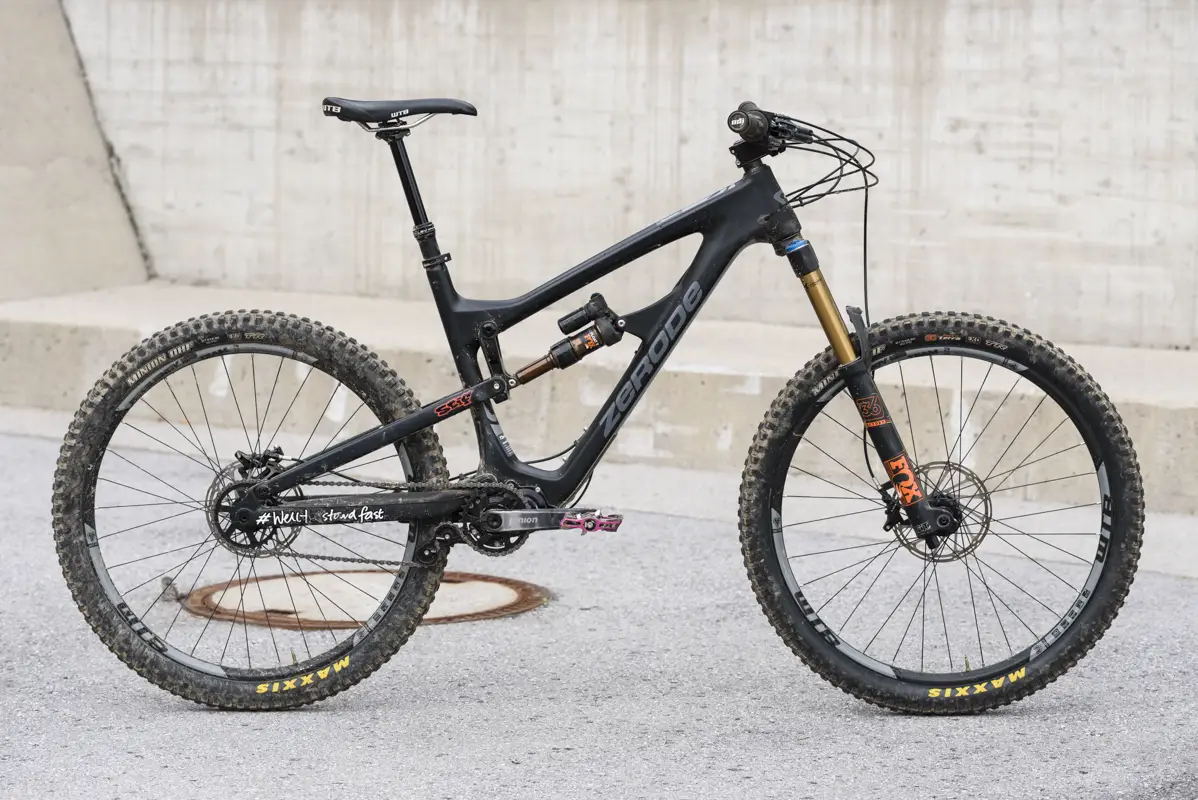
The Bike
From the get-go, there is no mistaking the Zerode Taniwha as an enduro bike. It has a burly carbon frame, gets 160mm travel front and rear and it’s built to take the type of abuse your average EWS stage is capable of dishing out.
Carbon fibre is the material choice for the Taniwha and it’s allowed Zerode to create an attractive bike with a Pinion gearbox expertly crafted in. There are no awkward lines or funny design aesthetics, it’s simply a good looking frame with clean lines that may or may not look similar to another enduro bike from another brand, *cough* Santa Cruz *cough*.
As the Taniwha was designed as a carbon bike first rather than being adapted from alloy, there are no compromises in this area. We get plenty of material around the head tube and gearbox junction to ensure a stiff frame for forcing through the rough stuff, which compared to some other carbon bikes, makes the Taniwha look burly and overbuilt. That’s probably not a bad move for the first attempt at a carbon bike, and certainly instills confidence in the bike’s durability.
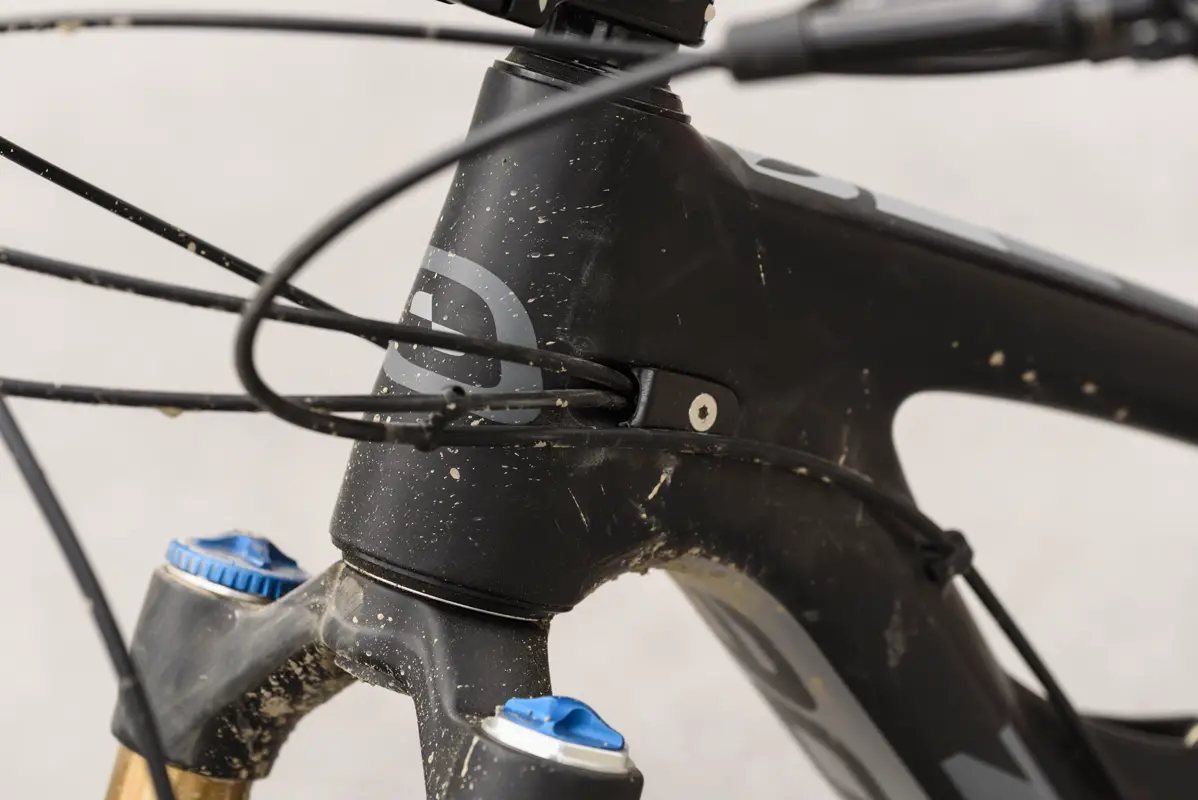
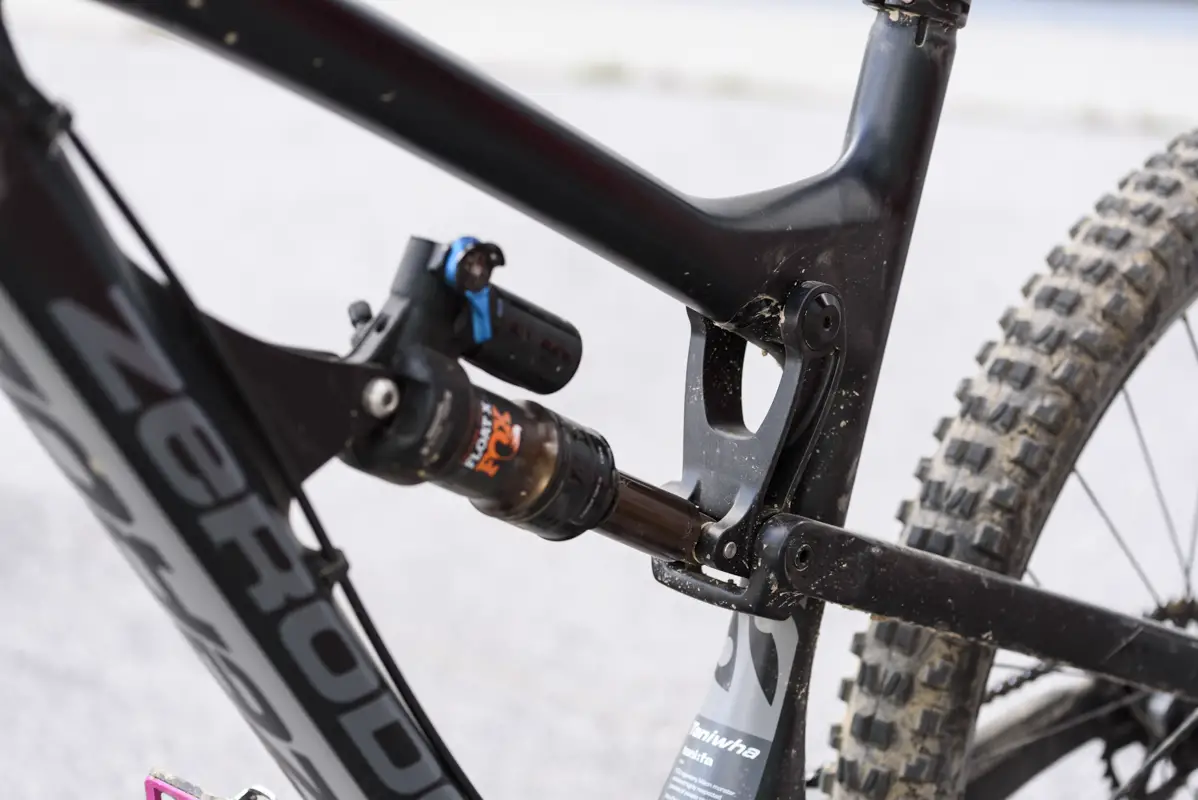

The gearbox cuts out the need to accommodate front or rear derailleurs, and that has afforded Metz a significant amount of freedom to design the dropouts and BB area as he sees fit. As such, the main pivot is built nice and wide for added stiffness. Also improving stiffness, Zerode is using a single pivot suspension design on the Taniwha with the shock driven by a tough alloy link. The shock, a Fox Float X on our test bike, mounts to the downtube via a moulded shock mount and leaves enough room in the front triangle for a water bottle to sit inside. With that said, a side exit bottle mount would be the preferred type.
The carbon front triangle is joined by a carbon rear end, another ballsy move for a brand first dipping its toes into the world of carbon, but like the mainframe, the chain and seat stays do look overbuilt and chunky.
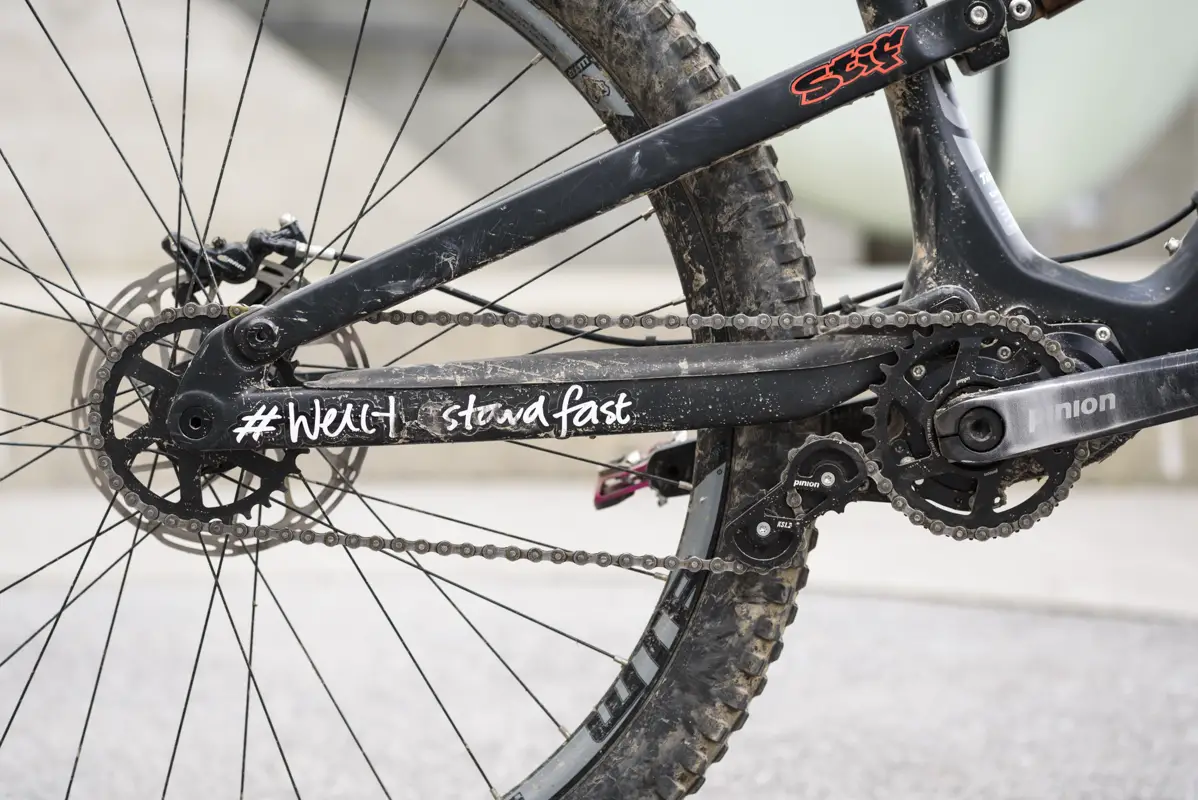
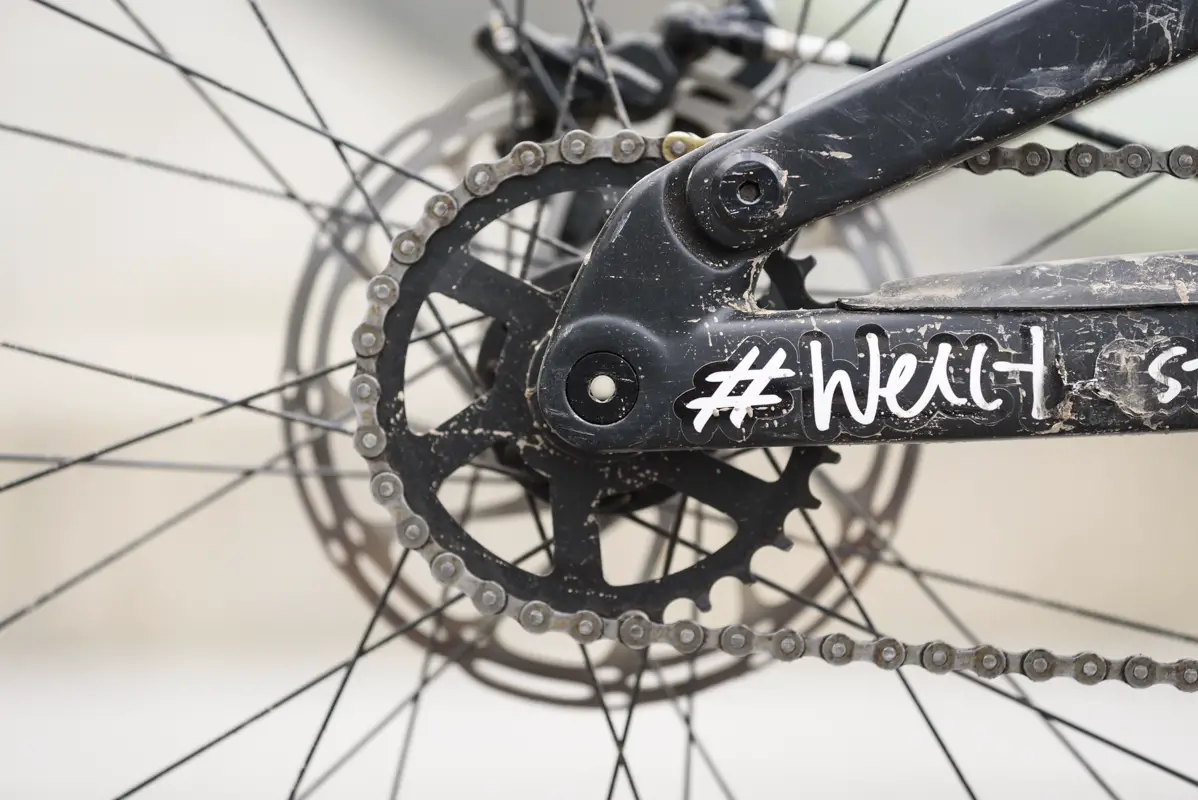
With all the gear shifting gubbins inside the alloy gearbox, there’s nothing hanging off the rear of the Taniwha to knock against tree stumps or smash against rocks. The lack of rear mech effectively makes the back end of the Taniwha narrower than a traditional mountain bike, and because Zerode didn’t jump on the Boost bandwagon, the Taniwha is narrower still.
While there’s no mech abseiling off the dropouts, you will notice that there is, what looks like part of a derailleur, hanging just behind the gearbox. This is a simple chain tensioner that keeps the chain taut on the single rear sprocket to ensure power gets to the rear wheel without any slips or jumps. The chain tensioner has come under a lot of scrutiny from online commenters, with many pointing out that it seems like a backward step to remove the rear mech only to add something else to the bike that could be knocked while riding on the trail. That’s a reasonable point to establish in an online forum, but during my time riding the bike in the real world, I never hit the tensioner once.
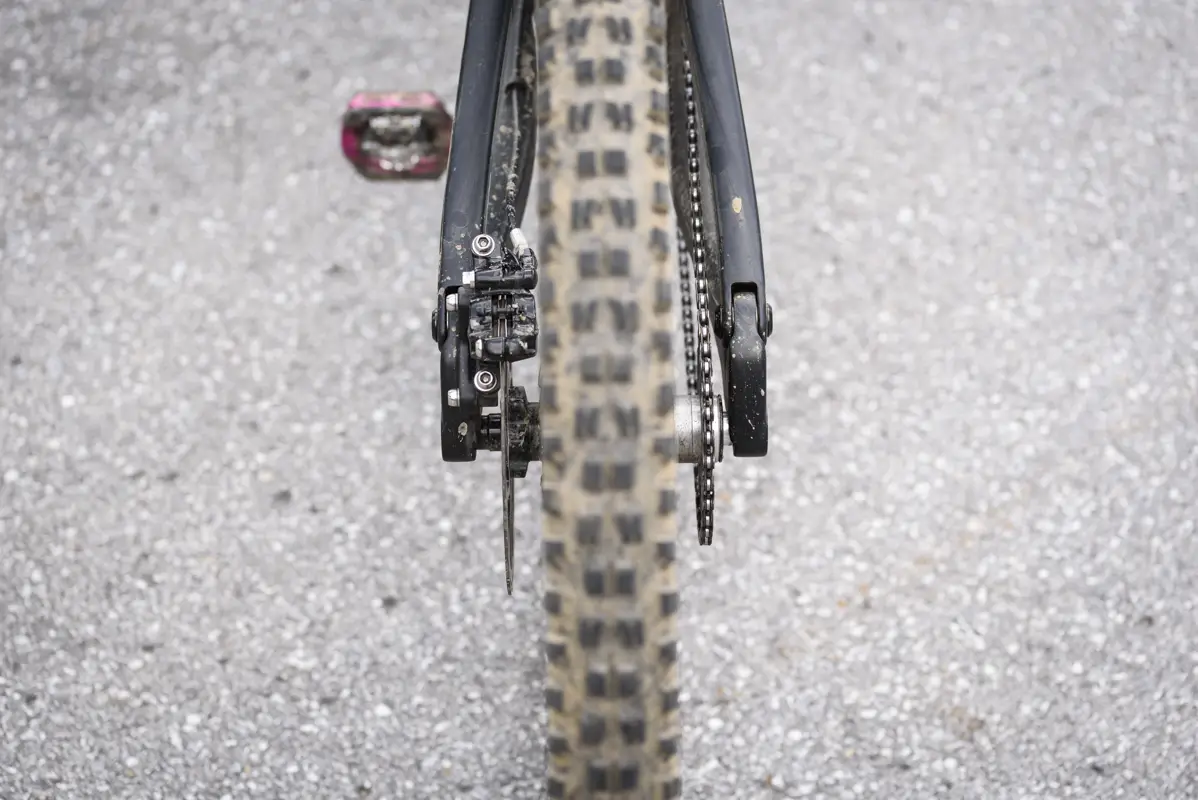
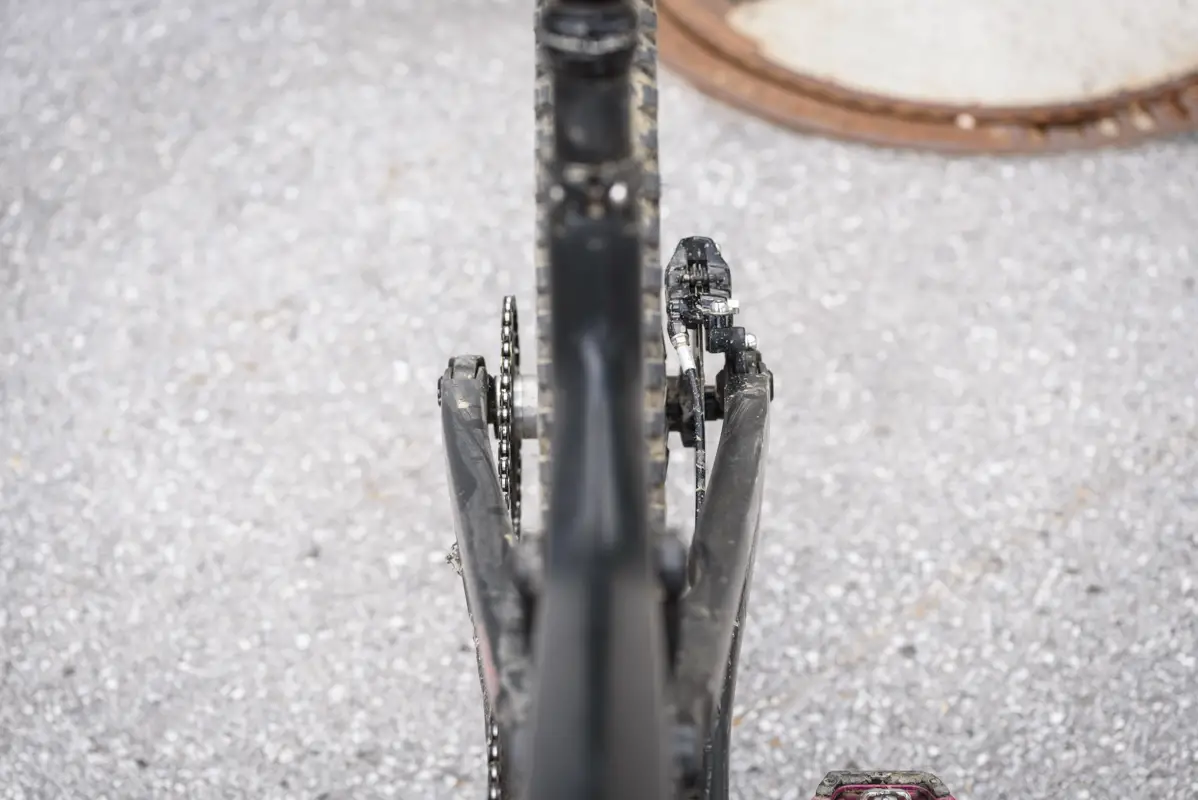
While we’re speaking about the drive system you might be questioning; why has Zerode used a chain for this bike anyway? Why not go for a belt drive and help cut down on maintenance? It’s a good point, but as the Taniwha’s suspension design creates chain growth and requires that tensioner, it would mean a belt wouldn’t work. At least, not easily anyway. There are also advantages of going with a chain-drive for a bike like this, the most significant being that a metal chain is significantly easier and cheaper to replace if you do break it.
UK importer for Zerode, Stif, has built the Taniwha up with a Hope single speed specific rear hub. What makes this a single speed hub is a slightly wider hub body and smaller freehub. The wider body allows the rear wheel to be built with less dish, which should mean a stronger and stiffer rear wheel. The smaller cassette body is still necessary to ensure a correct chain line is running to the tensioner and gearbox.
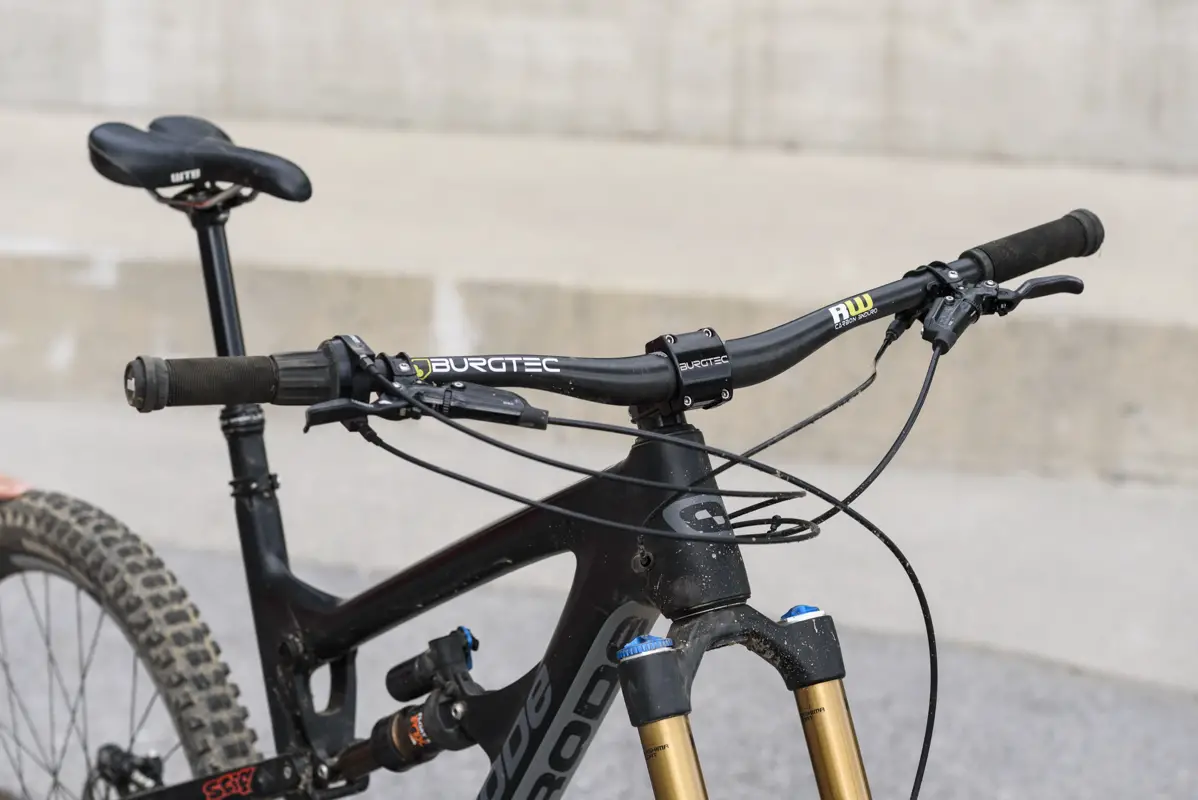

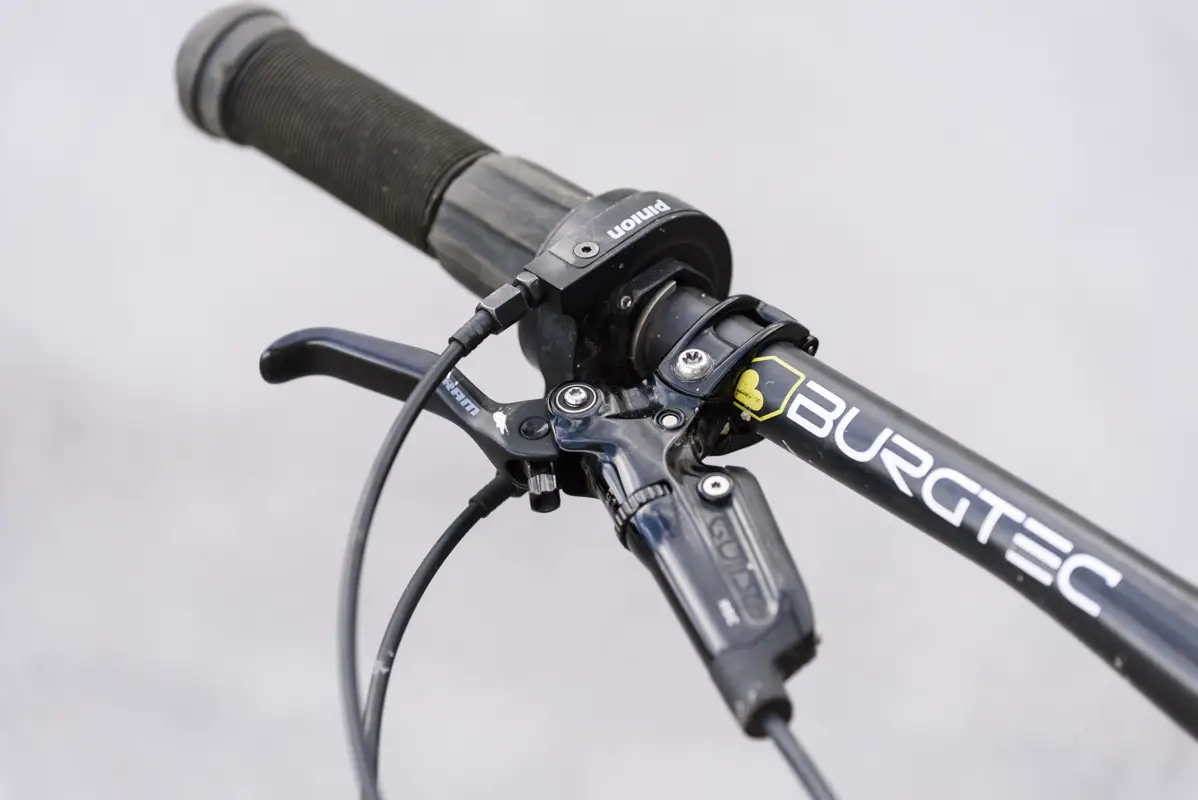
The Hope rear hub is laced to WTB rims as is the front Hope hub, and the UK component theme continues with Burgtec carbon bars, a Burgtec stem, and a WTB saddle. It’s solid and dependable kit all round, which I would personally be happy to spec when building my own bikes.
Fox supplies the front and rear suspension. Forks are the excellent Fox 36 RC2 with a slippery gold Kashima coating, while the rear shock is an equally slipprty Fox Float X hopped up with an EVOL air can. Brakes are SRAM Guide RSC and the dropper post is a KS Lev, while gear shifting is operated by Pinion’s own grip shift style shifter.
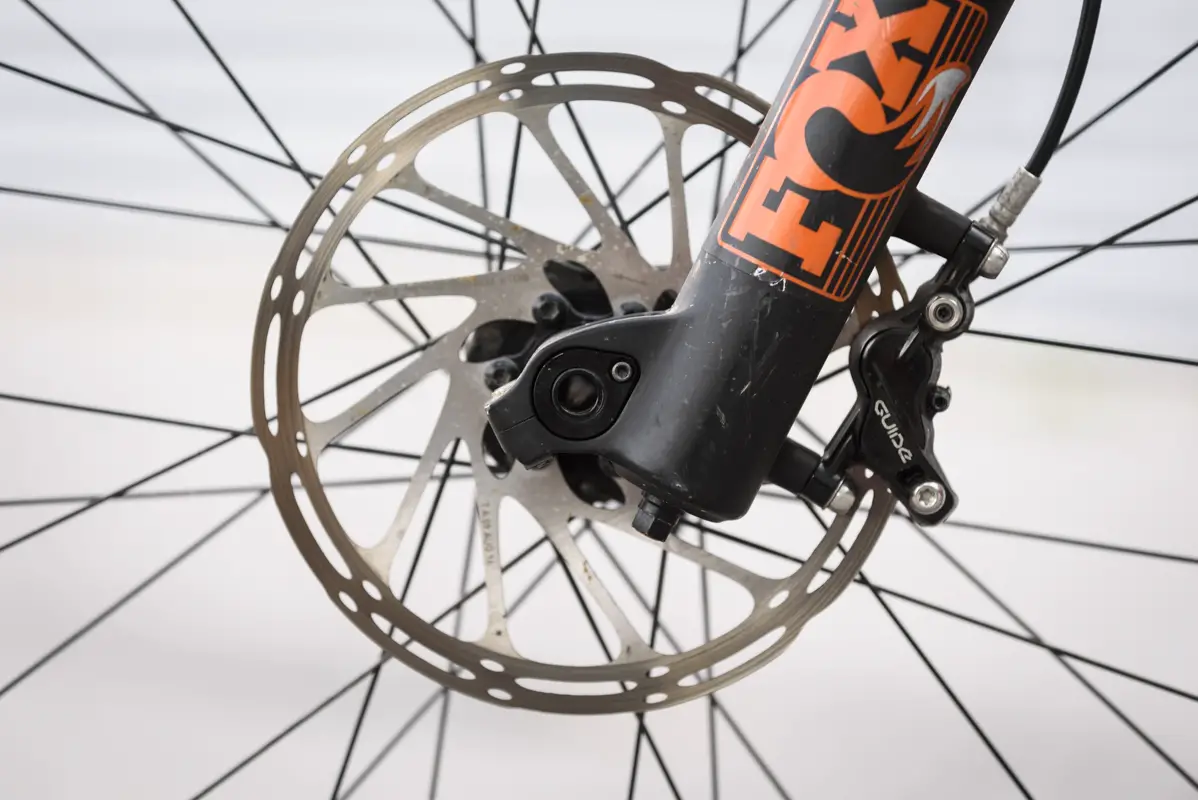
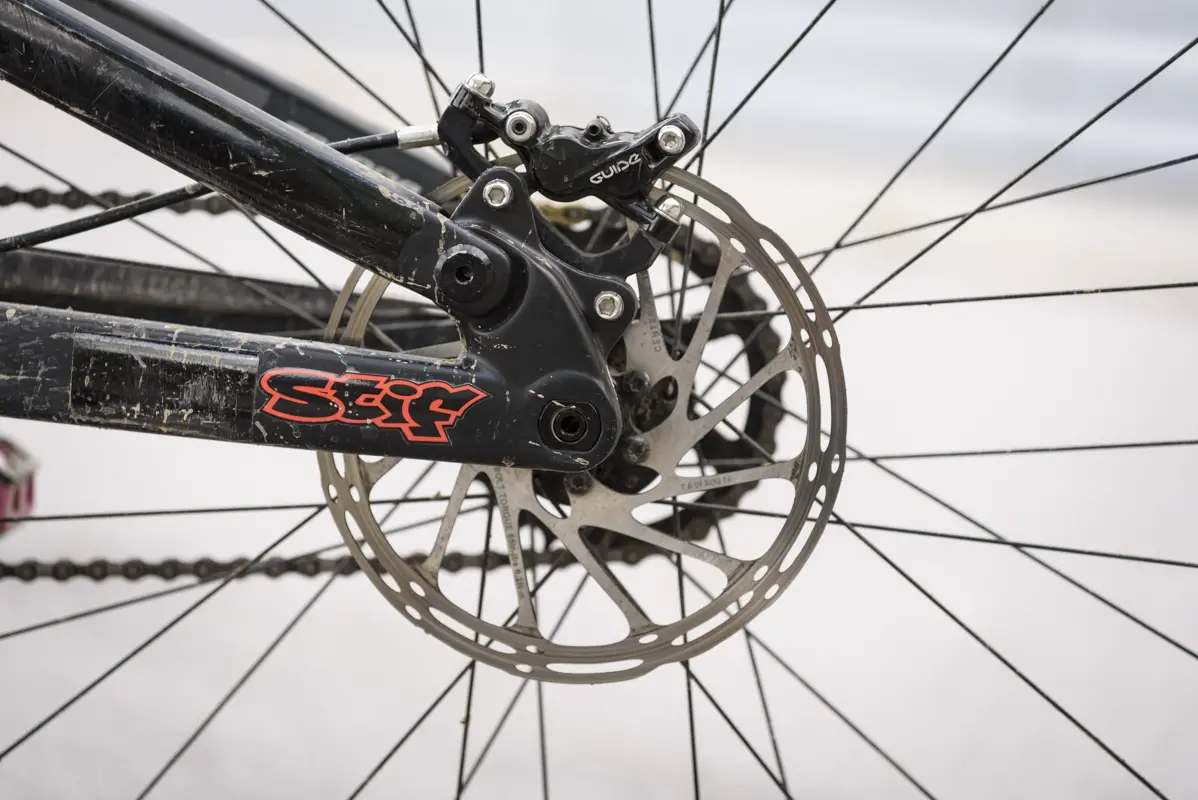
Now a grip shift type isn’t quite as common as it once was, and I think I speak for the majority of mountain bikers out there when I say that a trigger shifter would be the preferable option. But as of right now, the rotary grip shifter is the only option that Pinion offers. On a traditional derailleur system, the cable only needs to pull in one direction and a spring pulls the mech back in the opposite direction. With current gearbox designs, one separate cable is needed to pull the actuation mechanism in each direction, and that means a grip shift is the best way to do this.
So, now that we know a little about the Taniwha, and the spec, let’s take a look at how it rides.
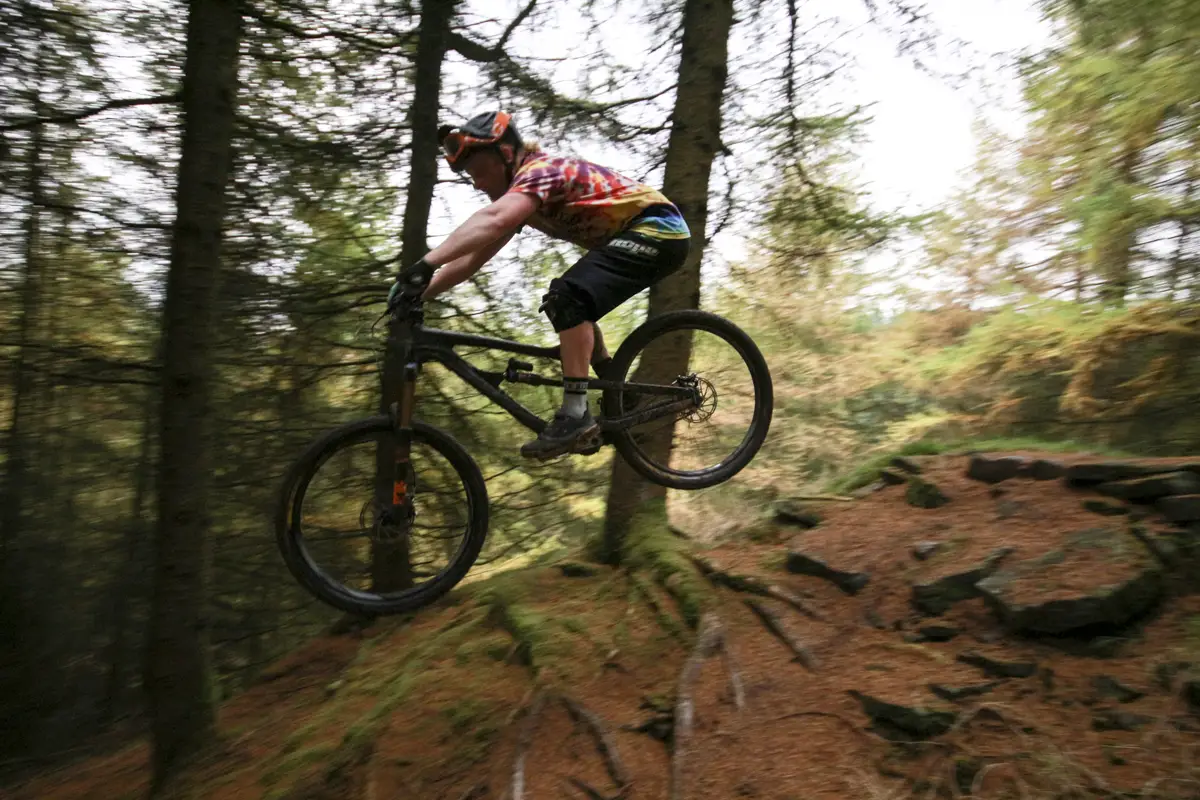
The Ride
With a gearbox boasting a 600% gear ratio I instantly decided to take the Taniwha for a ride around my local trails around Ladybower Reservoir and Castleton to see just how good that gearing would help me up some of the longer and steeper climbs. But I kinda wish I hadn’t. At least, not for my first time out on the bike.
After hearing all the rave reviews from Pinion owners about how good the gearbox shifts, its benefits and just how good the grip shift style shifter really is, I headed out on my first ride with rose tinted glasses and totally underestimated how much of a learning curve the gearbox was going to create. Due to the rewiring that’s required between your brain, right hand and feet in order to shift the Pinion gearbox correctly, riding the Taniwha on trails that you’re not familiar with can be a real challenge, and if you don’t shift into the correct gear at the right moment, climbs can become highly frustrating.
The problem lies with our familiarity with conventional external drivetrain systems, which we’ve all become accustomed to being able to shift under load. Getting to that point in a climb when you just can’t push any longer and you need to slip the derailleur into a larger sprocket to make it to the top. Your derailleur might not like it, and you may get a clunk and a bang, but you do have that option to shift gear when putting down the pressure. As modern 11-speed and 12-speed drivetrains are getting very proficient at doing it, they certainly don’t discourage you from making these kinds of hasty, high-torque shifts. Then there are those times when you misjudge a trail. You looked ahead and planned, but just got your gear choice slightly wrong. No matter, your derailleur will let you shift when powering along and you won’t lose momentum or flow.

The Pinion gearbox doesn’t work like this though. If you attack the bottom section of a climb out of the saddle then need to switch to something a little easier further up you’ll have to ease off the pedal pressure before the gearbox will let you switch gear. This takes a lot of getting used to, and in all honesty, I’ve still not quite got my head around it (which is certainly not helped by regularly swapping between different test bikes).
I found an ideal way to get around this issue was to try to ensure you have enough momentum while climbing so that you can coast a little, giving you time to back of the pressure a fraction, engage the shift, then quickly get back on the power. In theory, this is great, but I soon realised I’m not quite the climbing powerhouse I thought I was, and I rarely had enough moving speed in the first place to coast a little while shifting. The high weight of the bike (15kg / 33.1lb) means it decelerates quickly on a climb as soon as you ease off the pedals. This is especially out of the question when you’re climbing super steep rock climbs out of the saddle, as there is just no way to climb and shift like that.
Eventually though, for longer days in the saddle, if I knew I had a monster climb ahead of me on the Taniwha I would whack it in to the easiest gear and winch to the top, Not the fast way of climbing but it worked, was quite relaxing and that 600% gear ratio means it’s enjoyable enough to take in the views around you.

What I should have done for my first ride was to take the Taniwha on more enduro-style terrain at a trail centre. You know, the type where you have a long steady climb to the top, followed by a rollercoaster descent down that’s filled with flowing trails with jumps, rocks and berms. Something like that would have been an ideal introduction, because this is exactly the type of terrain this bike wants to be ridden on. Sating the Taniwha’s appetite, I did end up taking it up to Tweedlove, where I used the massive range of the Pinion gearbox to winch my way to the top of Glentress, before I got to experience the bike on the downs. And wow did it lap up those descents!
With all the gear shifting handled by the gearbox, all the weight is located centrally and low down in the frame. This not only means the Taniwha is exceptionally well poised and balanced, but it also means the rear end of the bike has a lot less sprung mass than a conventional bike, and that makes for incredible rear suspension action.
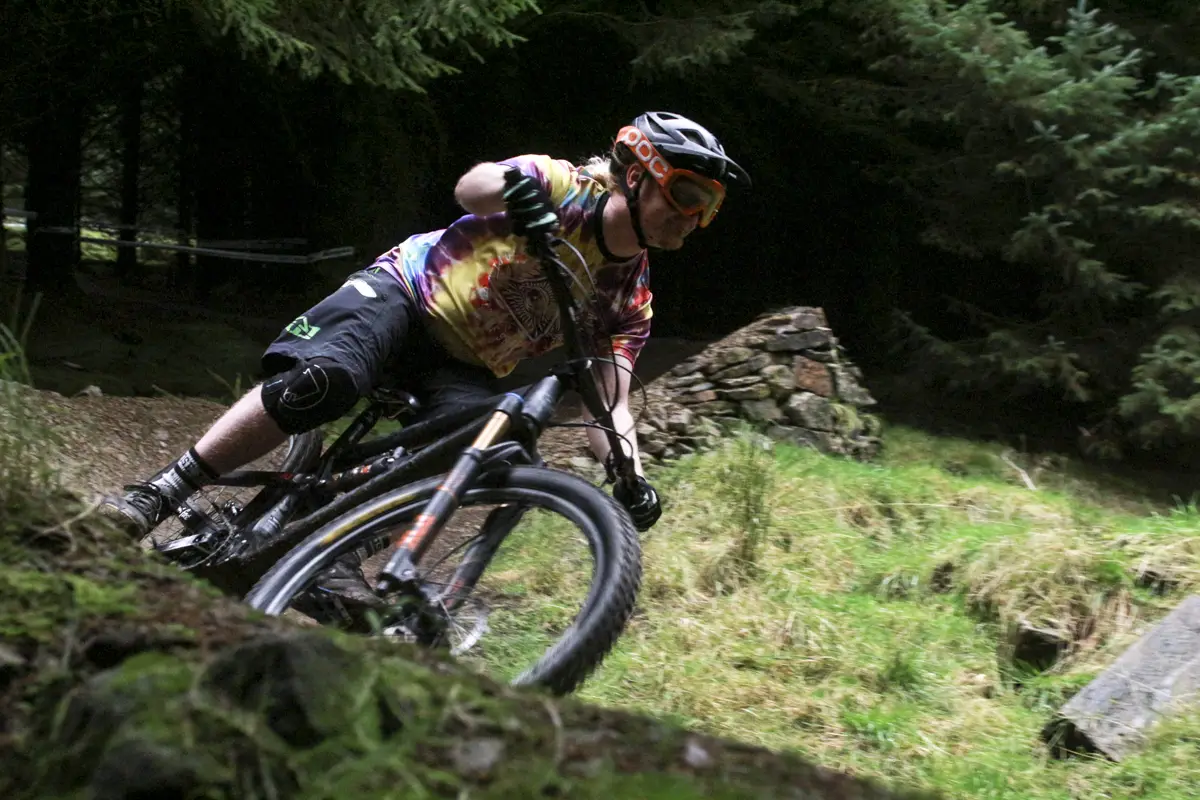
One of my personal bikes is a steel full suspension bike and it rides exceptionally well, and the rear suspension is very good. But in taking my bike out with the Taniwha for a side-by-side comparison on the same trails, I quickly appreciated how much more lively the suspension of the Taniwha is. It is downright incredible. The lightweight back end, coupled with the quality rear shock makes for a rear wheel that glides over obstacles rather than bumps off and over them. It feels like the rear wheel feeling is actually getting out of the way of rocks and bumps, skipping over terrain and doing so in a way that helps to keep forward momentum going.
The low centre of gravity also has advantages when cornering and while the bike is in the air. In fact, the Taniwha is quite a playful machine when airborne. The modern geometry of the bike helps too, and while the Taniwha is long and slack, it isn’t overly so and has a nice “Goldilocks” feel to it.
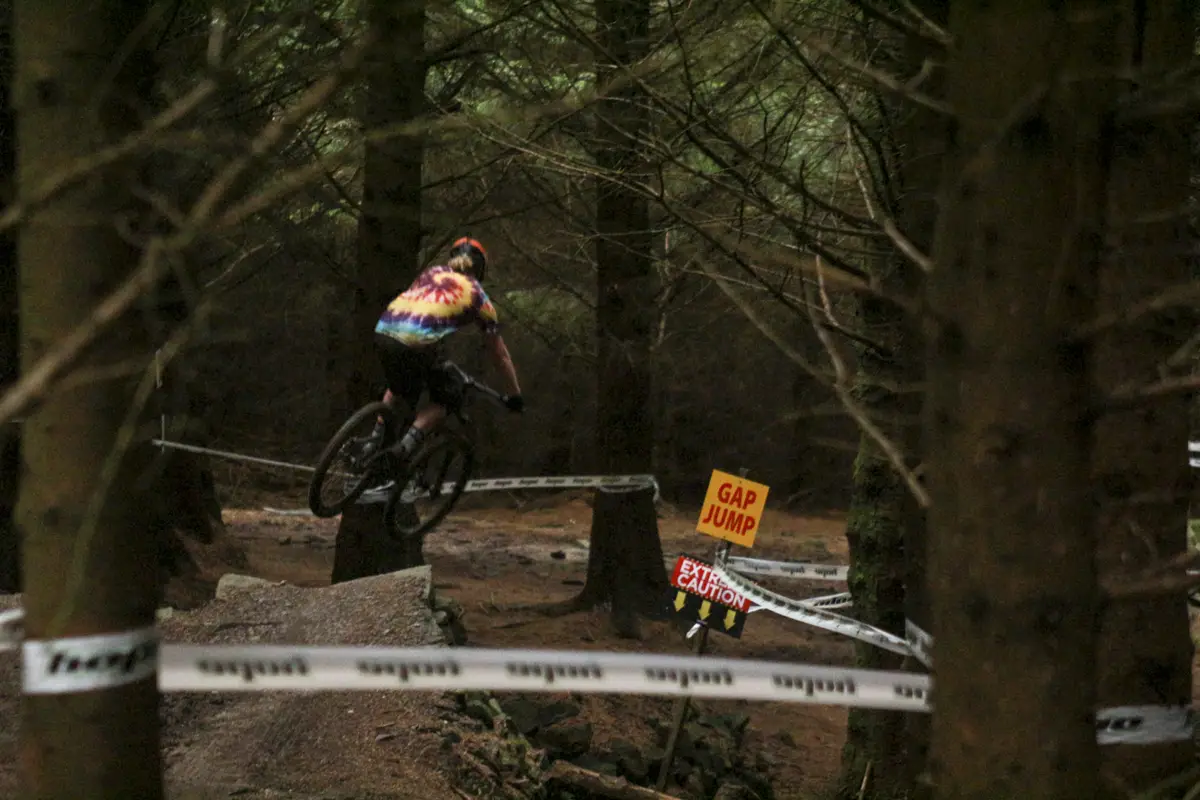
At 178cm I felt most comfortable riding the Taniwha with the dropper posted slammed to its lowest positing in the frame, this way I still got the benefit of a good pedalling position when the seat was extended but still had plenty of room to throw minimal shapes when hitting the jumps at our local bike park. There’s obviously a trend for longer and slacker bikes right now, but so what, the Taniwha handles everything in its path, as long as you can get on with climbing it.
Before I move on to the final notes of this review I do need to go back to that gearbox. This time it’s the grip shift style shifter. Again, this might be because I keep having to swap from bike to bike, but even today I tend to shift the Taniwha in the wrong direction. This usually means that I’ll ride into a downhill and shift into an easier gear rather than a tougher one. Other riders at the office experienced it too. As I’ve said, this is most likely me just not getting used to it, and being used to other shifting systems. The good news is that if you do find yourself shifting in the opposite direction you can cable up the shifter the opposite way around to work around it. That still doesn’t make up for the fact that you can’t shift while covering the brake though, which is something else that you’ll need to adapt to.
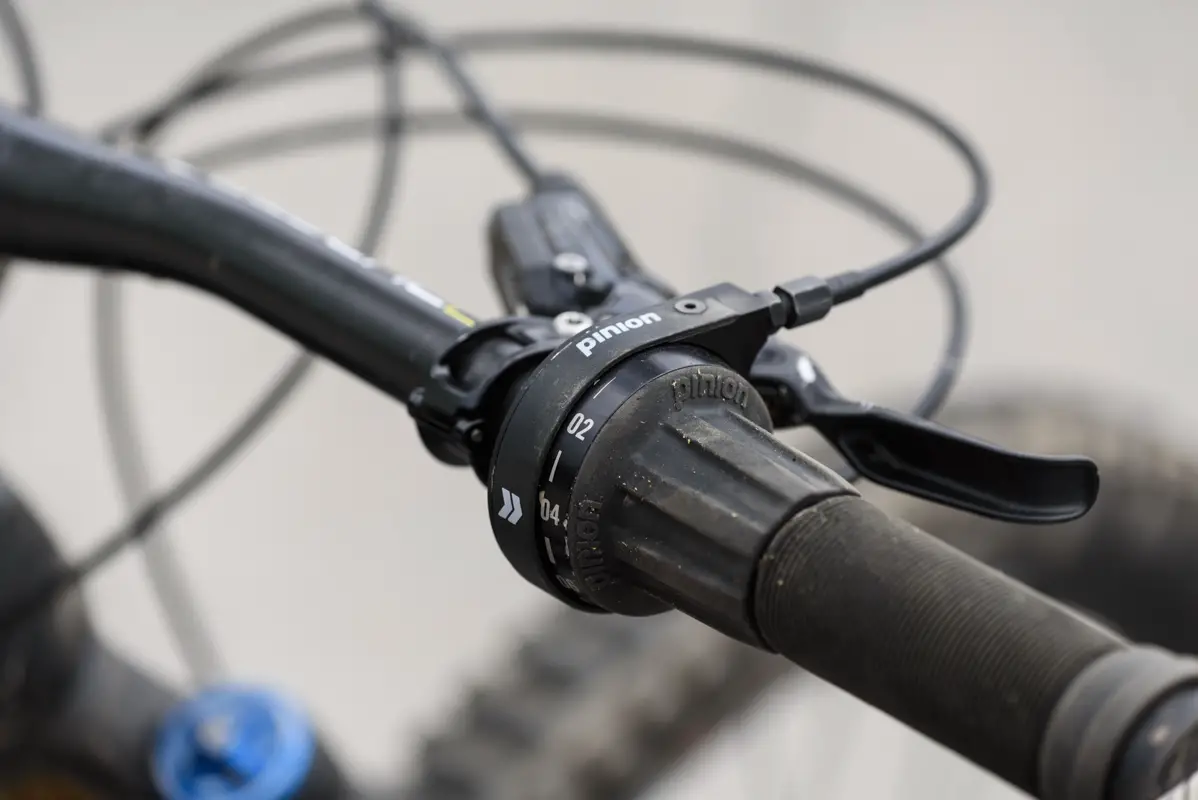
Durability Notes
The only issue we had with our Taniwha during the review was a frayed gear cable that was spotted by the chaps at Stif during Tweedlove and quickly swapped out. Since then the bike has handled our local trails, Peaks rides, trail centres and even downhill tracks in Innsbruck without fault.
Three Things That Could Be Improved
- A shorter seat tube and lower standover height, so riders have the option to size up if they prefer something longer. While I was happy on the large I know riders the same height who would want longer, but the XL would be too tall for them
- The rotary shifter works fine, a trigger shifter option would open this bike up to a whole load of potential customers
- It may be impossible from an engineering standpoint, but some sort of clutch mechanism to allow shifts under load would shoot the Pinion gearbox to an unrivalled level
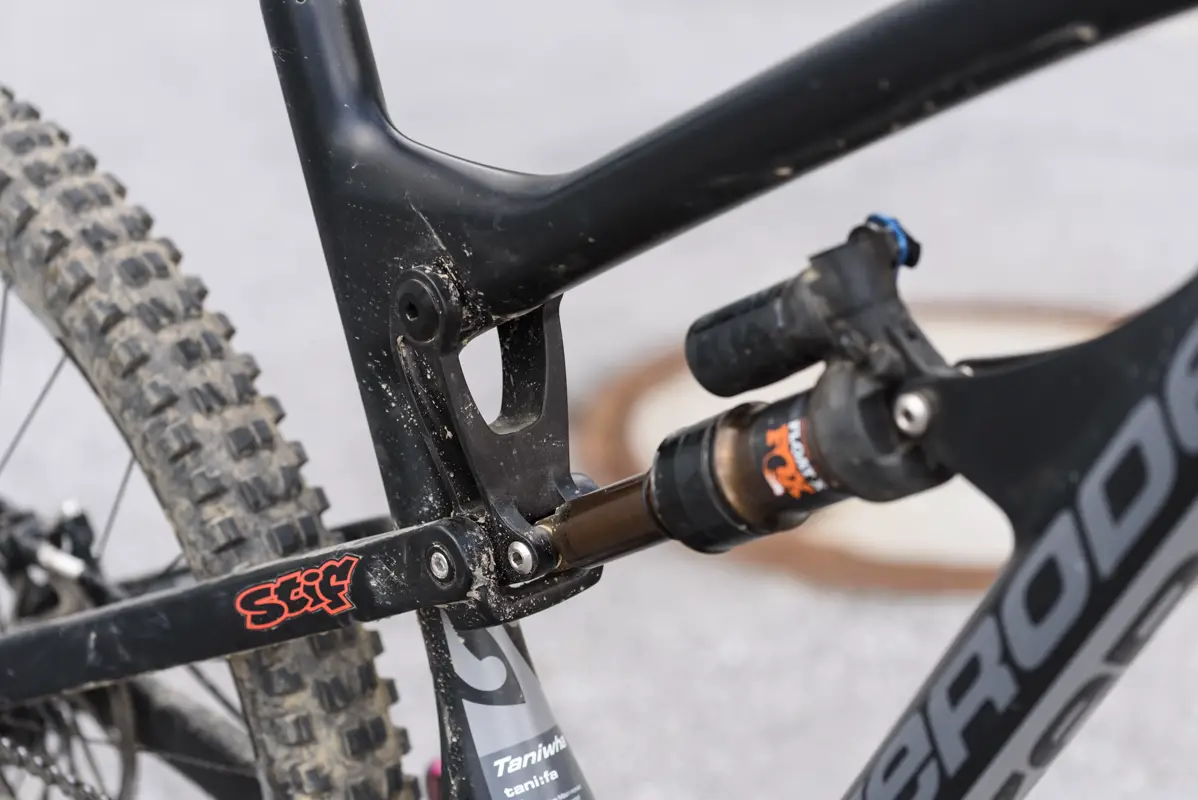
Three Things That We Loved
- Downright incredible rear suspension. Supple, buttery, silky – whatever word you want to use, the Taniwha’s rear suspension is it
- Enormous 600% gear range means you can climb up anything, without sacrificing downhill gearing
- Tough and stiff carbon frame that is happy to be manhandled

Overall
For many riders, the gearbox on the Taniwha will be the major draw to the bike, and it does bring some major benefits. The fact that you are dealing with an enclosed gear system that requires such little servicing (a quick oil change once a year is about it) will be a huge plus to riders who are sick of shredding through expensive cassettes, chains and chainrings. The stronger rear wheel is a nice bonus, as is the slimmer rear profile. Not having to worry about smashing off rear derailleurs is another big plus, especially if you ride tight, twist trails littered with granite rocks. Add in that incredibly active rear suspension package, and the Taniwha presents a compelling case for ditching your all mountain bike with its external drivetrain.
For me personally, the Taniwha wasn’t a bike I really enjoyed riding around the natural, rugged and undulating terrain you’ll find in the Lakes, Ladybower or Castleton for example. But then I’m not the strongest of climbers and the gearbox requires a significantly different shifting technique. Take the Taniwha to a bike park though, and it all starts to make sense. For those after an enduro race bike, or for those who spend most of their ride time winching up, long steady climbs to access gnarly, technical, feature-laden trails on the way back down, the Taniwha is a unique option.
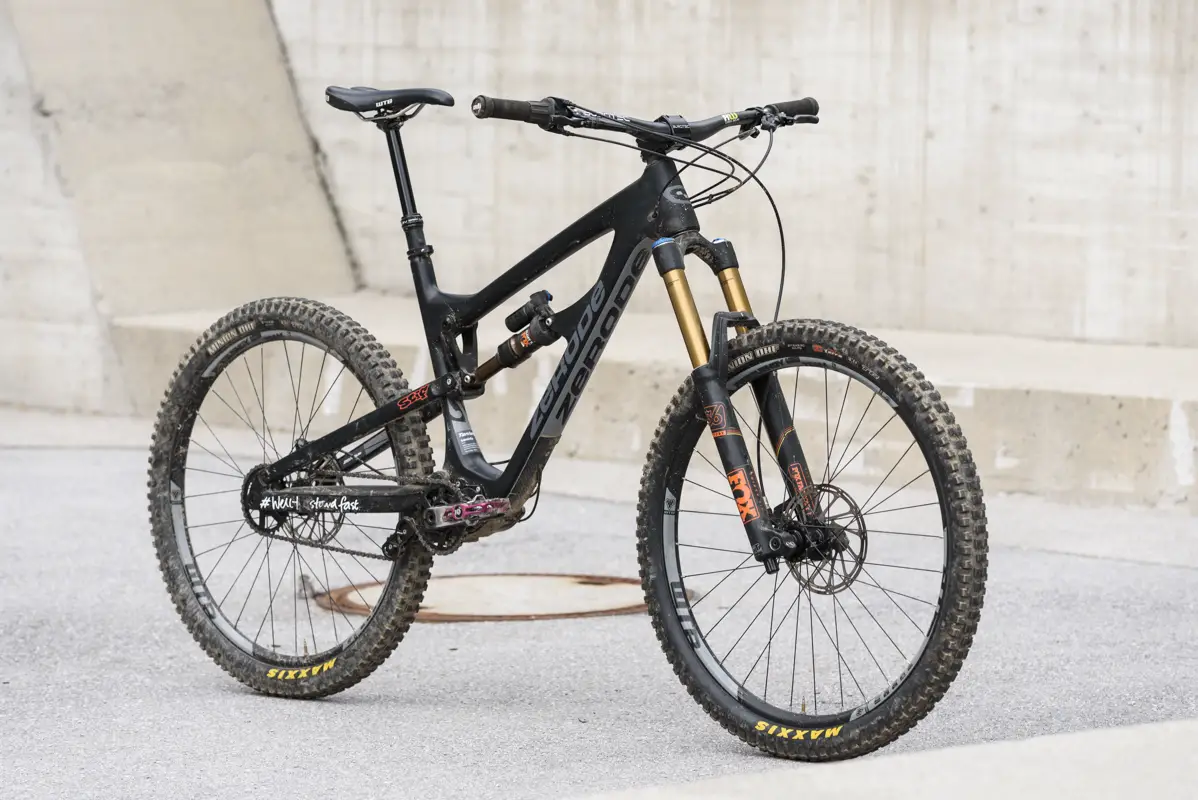
Zerode Taniwha Specifications
- Frame // Carbon Fibre, 160mm Travel
- Fork // Fox 36 Float Factory Series RC2, 160mm Travel
- Shock // Fox Float X Factory Series
- Hubs // Hope Pro 4, 110x20mm Front & 142x12mm Singlespeed Rear
- Rims // WTB Frequency Team i25, 32h, Tubeless Compatible
- Tyres // Maxxis Minion DHF EXO 3C 2.35in & Minion DHF EXO 2C 2.35in Rear
- Drivetrain // Pinion P1.12 Gearbox
- Shifter // Pinion Rotary 12-Speed
- Cog // Zerode Custom 30T
- Brakes // SRAM Guide RSC, 180mm Front & Rear
- Stem // Burgtec Enduro 35, 50mm Long
- Bars // Burgtec Carbon Enduro 35, 800mm Wide
- Grips // ODI Longneck
- Seatpost // KS LEV Integra, 150mm Travel
- Saddle // WTB Volt Race
- Size Tested // Large
- Sizes available // Medium & Large
- Claimed weight // 15 kg (33.1 lbs)





Nice write-up! There was no mention of any extra drag compared to a derailleur setup. In pure numbers gearboxes do have more drag, but I presume it’s too small to really notice?
@kilbenator – certainly not enough to know about it while riding the bike. It’s very smooth, and even in the workstand it’s pretty hard to tell if there’s any more drag than a conventional drivetrain.
ST Wil.
with a near instant gear change you don’t need to coast the bike, just back off or stop for a split second and change gear.
Also has the benefit that you can change gear without pedalling, useful sometimes going into tricky sections etc.
Sure I read somewhere that rohloff (sp) had or are coming out with an electronic shifting version of theirs which uptill now has also been gripshift.
I think the boxes themselves can shift under load but you can’t give enough force through a gripshift to do it hence why electric shifting ones will be a great step forward
“…. even today I tend to shift the Taniwha in the wrong direction…..this is most likely me just not getting used to i….The good news is that if you do find yourself shifting in the opposite direction you can cable up the shifter the opposite way around to work around it.”
Slightly odd that you frame it that way, as you note is mostly a familiarity issue so neither +ve nor -ve, but I think the flexibility of the shifter being able to be used either way round should be a massive plus point for customisation/
Would love to try one of these, or another Pinion bike, I’ve been using IGH’s for a while so the whole having to back off to shift thing is second nature to me now and I have the opposite issue in that I keep backing off on my derailleur bikes and forgetting I need to pedal for it to shift!
@singletrackwil – ah, interesting. Thanks for the feedback. I may have to get off my a*** and go test ride one!
Have you ridden a Rohloff equipped bike at all? It obviously shifts in a similar style to the Pinion, gripshift and all. I’d be interested in a direct comparison there.As mentioned, there are different shifter options evolving which should transfer.
“with a near instant gear change you don’t need to coast the bike, just back off or stop for a split second and change gear.”
My experience of a couple of Pinions is that this is sometimes the case, where you can soft pedal and shift, but other times the gear refuses to shift until you completely back off. Not always easy on a climb.
Sounds like an ideal gear system for someone used to hub gears where a momentary slack is needed.
As a lad I was taught to move the pedal back a couple of inches when changing – you don’t really need to do that, just slack off – but it teaches you the automatic behaviour needed.
I’ve been on 1×11 for most of the last year but 4 years before that with Pinion on my main mtb (and Rohloff before that for many years).
Still don’t understand the trouble people seem to have with shifting – yes you have to back off but you only have to do so momentarily (and you can then drop multiple gears much easier than you can on a mech). I could do it trackstanding on a steep climb and carry on. I have far more instances with conventional gears when shifting ‘fails’.
Far from winching up steep climbs in a single gear the big advantage of Pinion for me was that you could easily shift gear to get more traction for a particular obstacle on a techy rocky climb and then change back. I really miss the ability to shift without pedalling.
I didn’t managed to damage the Pinion chain tensioner in c4 years – if you look at where it sits it’s high and in line with the tyre. if you ground the bike on a rock it gets pushed backwards until the tyre hits. Doing the same sort of riding i’ve smashed one XT mech and put some good scrapes in a second in a year.
Main disadvantage remains the weight.
I’d be scared to test one as I know I’ll want to buy it! I need to keep a bike for at least 12 months… Next one is the one I reckon.
Been intrigued by gearboxes for a couple of years now.
“A shorter seat tube and lower standover height, so riders have the option to size up if they prefer something longer. While I was happy on the large I know riders the same height who would want longer, but the XL would be too tall for them”
This is fine, but for those of us that are very tall the trend for shorter seat tubes on XL bikes is very bad, when dropper posts max out at 175mm…Maybe the comment should be ‘make the reach longer’?
Interesting bike and perspective. One pet peeve on the writing:
> This takes a lot of getting used to, and in all honesty, I’ve still not quite got my head around it
What does “in all honesty” add to this sentence?
To me, the implication is that you tried to make your opinion conform to what you thought readers (or the manufacturers) wanted to hear, but now you’re allowing yourself to be candid.
I think the entire review should be candid. If you believe the inability of the transmission to shift under load defeats its appeal, say so. Have an opinion. Don’t hedge.
> the Taniwha is a unique option.
If that isn’t damning with faint praise..
“a small bike company based out of New Zealand”
I think you’ll find they’re based in New Zealand.
Go electrical servos on the Pinion god damn it!